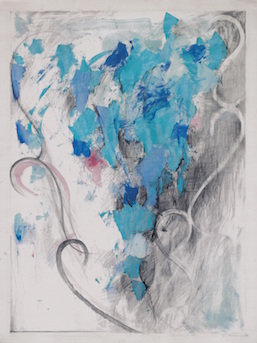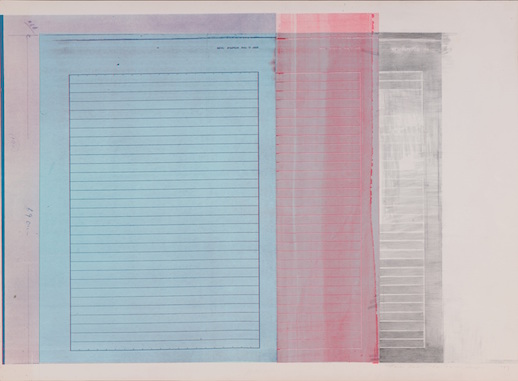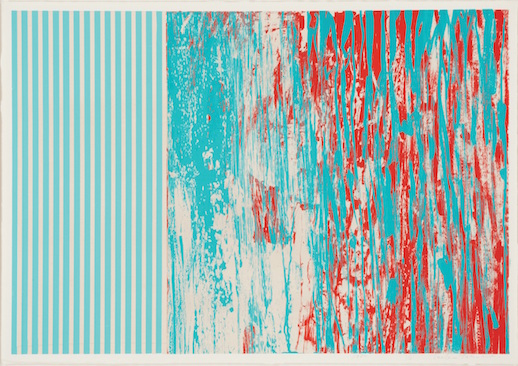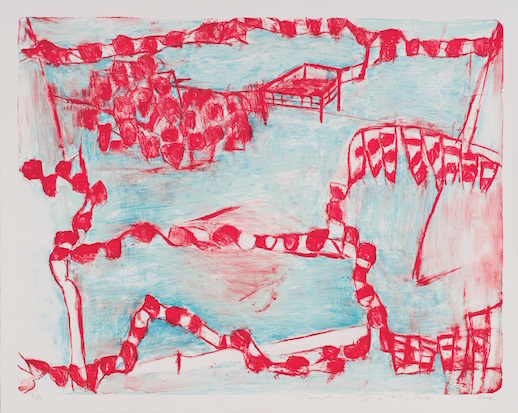Toeko Tatsuno On Paper
Who was Toeko Tatsuno? Why should you head out to the Museum of Modern Art, Saitama to see her latest retrospective?

Almost everything in “Toeko Tatsuno On Papers: A Retrospective 1969–2012” is displayed chronologically so viewers can see the similarities and changes in her work over time. Sketches are positioned near more finished and larger pieces, offering a window into the artist’s mind. Because of the insights they provide and their usually more affordable prices, works on paper can form the backbone of individual or institutional collections. In that sense, this show is a good education on what an aspiring collector should look for when purchasing art. In many ways, it also surveys trends in modern art over the past fifty years.
Curator Itaru Oura noted that among Tatsuno’s early work at the beginning of the show, a painting of stones was significant as an indicator of motifs to come. She started her trajectory like many career artists in Japan, by studying at the Tokyo University of the Arts. Like other art students, her early work from the 1960s imitated artists popular at that time: In the late ‘60, she mixed painting and silkscreening in the style of Robert Rauschenberg, Andy Warhol, and Brice Marden.
In the early ‘70s, photography blurring the lines between reality and imagination increased in popularity. This development could also be seen in printmaking with the use of photo negatives in silkscreens and lithographs. In her first show after graduation, Tatsuno established herself with prints using photographic negatives. Similar to the work of Rauschenberg and Jasper Johns, her politically relevant silkscreens 73-1 and 73-2 trap a piece of the vernacular and include what looks like an English newspaper’s headline about Nixon. While the piece of torn newspaper and the tape are reproductions, and the graph behind it is indicative of a change in Tatsuno’s style.

The ‘60s and ‘70s also saw the rise of Minimalist artists like Sol LeWitt, who used a shallow field of focus, a homogenous surface, and usually a monochromatic palette. Tatsuno’s work reflects this trend––with her own twist: She based her abstracts on objects from everyday life, such as composition notebooks scored with lines. This was also the era in which photocopy machines were becoming ubiquitous, and Tatsuno played with graphs to create abstract shapes within the lines, or layered lined pages to produce something more than the original images themselves. Take, for instance, Work 77-D-10. The simplicity, conceptual aspects, and minimal and tones greatly appealed to the art world.
In the ‘80s, Tatsuno’s prints became more painterly but were still largely restricted to graphic stripes. She remained open to new trends and materials, however. She made sketches with oil sticks, which are larger than oil pastels and more like oil paint. She began doing one half of a work as a print and one half as a drawing. The stripes gradually disappeared and mark-making came to the fore. Stripes became curvilinear, and objects like plants in her home or studio started appearing. Critics complained that she was no longer doing Minimalistic work, but Tatsuno insisted there was a reason for this new style. With hindsight, it seems as if she might have been searching for fresh expressions uniquely her own––ones that suited her lifestyle as an artist outside of the incubator of university.
Tatsuno’s sketch-based abstractions of familiar objects on paper led to the larger, vibrant paintings for which she is now renowned. Colored squares on graph paper, views from the studio window, bent straws, stacks of pillows––anything could be sketched. These images would then evolve into more abstract geometric forms, and this step-by-step progress is intriguing to see.


If you have ever wondered about how an artist’s mind works and how it moves from a simple idea to a completed piece, “On Papers” is not to be missed. It is an ambitious exhibition. The curatorial team consulted with Tatsuno before her death in 2014, and it has chosen quotes from interviews with her (in Japanese) and posted them on the museum walls. Work from Tatsuno’s personal archives is also included, some of which is shown in Japan for the first time. Her family has offered its full support to create this retrospective as an honor to her memory.
Michelle Zacharias
Michelle Zacharias



